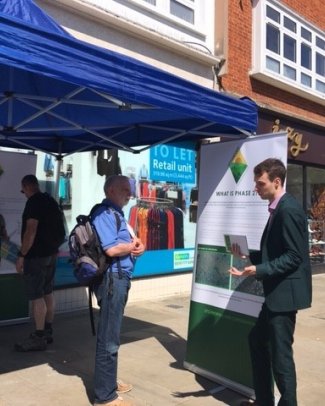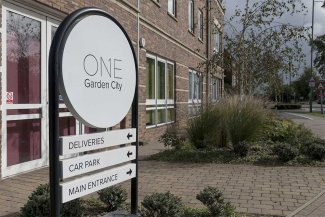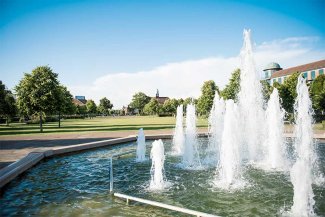Answers to commonly asked questions
Q.1. Why is the Foundation proposing to build new houses on its land? The proposed housing development has progressed in response to the North Hertfordshire Local Plan, which is due to be adopted later this year. As part of this process the Foundation was requested to support the Council’s requirement to provide additional housing as part of the Local Plan. The decision to support the allocation of land to the north of the Grange Estate was a very difficult one and the Trustees agreed to support this after a local community consultation exercise in 2013 and various background studies looking at a range of issues. The decision to support the allocation of housing in the Green Belt was on the understanding that the statutory Local Plan process supported its inclusion.
Q.2. What’s the evidence of local housing need? The Local Plan sets out evidence for housing need across North Hertfordshire, including Letchworth Garden City. We also undertook our own studies to further examine the local situation before agreeing to propose land for development and we have now completed a full Housing Needs Survey.
Q.3. Where can I find out more information about the North Hertfordshire Local Plan? Information is available on the North Hertfordshire District Council (NHDC) website:
Q.4. Has North Hertfordshire District Council consulted about the Local Plan? Yes. The Local Plan was the subject of a series of consultation events stemming from 2012 as part of a statutory process administered by North Herts District Council. This included a Public Examination held by an Inspector appointed by the Secretary of State, which enabled local residents and groups to express their views and which ended in Spring 2018. Subsequent modifications to the Local Plan were then subject to further public consultation by the Council and ended in April this year. The Inspector is now considering those responses before issuing his report.
Q.5. When will we know whether the Local Plan will be adopted? It’s not known, but a report from the Inspector is expected later this year, when the Council will then consider whether the Plan should be adopted.
Q.6. Will the housing development go ahead if the Local Plan is not adopted? The two proposed sites which are on green belt land, LG1 and LG3, will not proceed unless the Local Plan is adopted.
Q.7. Why is the Heritage Foundation consulting on the future of Letchworth? We want to make the most of the time available, leading up to the decision about whether the Local Plan will be adopted. We want to engage the public in dialogue to ensure any development taken forward best meets local requirements. This will help us shape the type of development that’s proposed, understand areas of concern and where possible ensure that these are addressed.
Q.8. Is the consultation on the Local Plan separate to the Heritage Foundation’s consultations? Yes – these are entirely separate, and we do encourage anyone who would like to give feedback, to contact the Council directly.
Q.9. How can I formally feed into the Heritage Foundation’s consultation? There are a range of ways you can feed in to the consultation. You can visit us at a local pop-up consultation event. You can feed in your views in via our online surveys on this website and email us at consultation@letchworth.com Links to our online surveys can be found here.
Q.10. Where is it proposed to build the new housing? There are a range of sites in the Local Plan which are owned by different organisations, including the District Council and Heritage Foundation. The LG1 site north of the Grange Estate and the LG3 site east of Talbot Way and Kristiansand Way are the sites on which we are currently focussing our consultation discussions as both are owned by the Foundation and these are the largest sites.
Q.11. How many houses are planned to be built? The allocation in the Local Plan is for 900 houses on the LG1 land north of the Grange Estate and 120 houses on the LG3 land east of Talbot Way and Kristiansands Way.
Q.12. How many of the new homes will be affordable? We propose that 40% of the homes on the LG1 site and 40% of the homes on the LG3 site will be affordable. This will be a combination of homes for rent, shared ownership, self-build (LG1 only) and there is the potential for community groups to be formed to provide housing.
Q.13. What type of housing will be available? Housing design will be strongly influenced by Garden City Design Principles. Our international Re-Imagining the Garden City design concept competition, delivered in partnership with the Royal Institute of British Architects (RIBA) and won by EcoResponsive Environments, has enabled ideas and expertise from around the world to help inform the design of the LG1 housing development. There’ll be a mixture of houses and apartments, including homes for families and older people and for those trying to get their first home, including options for younger new home owners and for those who wish to downsize. We’re also proposing to make land available for self-build on LG1.
Q.14. Can we see any proposed plans for the development sites? We do not have detailed plans for any of the sites at this stage, as we want to know your views before finalising any proposals. The Re-Imagining the Garden City design competition was intended to provide people with an opportunity to comment on some initial design concept ideas, which will help us understand the type of development that people would like to see on LG1. For LG3, we have provided an initial illustrative sketch layout to help residents understand how a development could be laid out. Once we have a clearer idea on possible layouts and designs, we will undertake a further consultation to obtain your views.
Q.15. Will the Greenway be affected? There’ll be no loss to the Greenway; a linear park approach is proposed for the part of the Greenway adjacent to the new development and in addition will be creating an additional route to provide access to the countryside.
Q.16. How is the landscape being considered? The landscape strategy for the new development will be strongly influenced by Garden City Design Principles and with an overall aspiration to have a net bio-diversity gain on the main development sites. For LG1, we will retain as much of the established hedgerow and existing trees as we can, together with new hedge planting and over 2,000 new trees. This includes the retention of existing woodland which will be reinforced to strengthen the Green Belt boundary. At LG3, we will be protecting as much as possible of the established landscaping and supplementing this.
Q.17. How is the environment and ecology being considered? We have been undertaking on site surveys for more than two years and have conducted expert research into environmental and ecological considerations for LG1. We will continue to work with ecologists in setting the strategy for the development, with an overall aspiration that there will be a net gain in terms of biodiversity. We have an Ecology Surgery taking place on 11 July 2019 and are keen to share information and hear your views.
Q.18. Why isn’t brownfield land being used to develop the sites? The Local Plan includes a range of brownfield and greenfield sites and we will continue to work very hard to bring forward brownfield sites under our ownership as soon as we can. This includes the Foundation’s former offices at Icknield Way. However, brownfield sites aren’t large enough to develop the number of houses required in the Local Plan and we are of the view that we also need to protect employment areas as part of a balanced approach to meet current and future needs.
Q.19. Why are the Office for National Statistics (ONS) housing figures different to the North Herts District Council figures? ONS household projections are just one of many data sets used to assess housing need. The total housing requirement calculations are part of North Herts District Council’s responsibility and have been scrutinised as part of the Local Plan process, including the Public Examination. Our own research and housing needs survey shows additional housing is required. This is needed to support the local economy, encourage investment and to help provide homes for local people. It will also help address the large number of hidden and concealed households identified in our research.
Q.20. How is the impact of transport being considered? Transport is an important consideration and we recognise the concern of the local community regarding this, particularly in relation to traffic and car parking. We commissioned transport consultants, Steer, to work with us on the two main housing sites and they have been working closely with the County Council who are responsible for highways. This has included proposals for a new road to the north of the LG1 site as well as traffic modelling for the LG1 development. We propose LG3 will be served via Flint Road, without vehicular access going through existing residential areas to the west. We have also been looking at alternatives to the car which may benefit the whole town, in particular; cycling and public transport.
Q.21. Are you considering sustainable transport? Yes. We believe that finding good quality, safe and reliable alternatives to the private car should be part of the new development proposals, particularly site LG1, which should also seek to benefit the rest of the town. We have already published a town wide cycling strategy and are looking at public transport opportunities. We’ll support measures for more environmentally-friendly transport, including electric charging points.
Q.22. Will improved healthcare facilities be developed? Healthcare provision can often be complex as there are a range of organisations involved. This is discussed in the Council’s Infrastructure Delivery Plan which is part of the Local Plan process and was presented at the Public Examination. The policy associated with site LG1 in Letchworth to the north of the Grange requires the provision of a GP facility. Although we’re not responsible for GP provision in Letchworth, we have been working with GPs and the Care Commissioning Group exploring the feasibility of establishing a town centre health hub to cope with our growing population, and to make GP recruitment more attractive and feasible.
Q.23. Will the Heritage Foundation be responsible for the maintenance of the new development? Yes, we’ll ensure the new developments are maintained to a high standard.
Q.24. Will the allotments be affected on the LG3 site east of Talbot Way and Kristiansands Way? No, the allotments will be retained, and vehicular access will continue to be provided via Flint Road.
Q.25. Is the Heritage Foundation doing this for profit? No. The Heritage Foundation is a not-for-profit organisation. We’re the only garden city of our size in the world that retains the original ‘value capture’ model, which means the money we generate goes back into the town through our charitable commitments. This includes benefits for the local community such maintaining the estate, Ernest Gardner Treatment Centre, community transport, tourist information, heritage advice, community grants, and management of much-loved venues including the Broadway Cinema and Theatre, Studio and Gallery and Standalone Farm.
Q.26. You have published the recent housing needs report, can we also see the earlier report which was on your website? Yes, the 2016 housing report is available here.
Q.27. Can we see the information that was provided for the 2013 consultation? Yes, the 2013 transport report can be found here and appendices here). The 2013 ecology report can be found here, the 2013 socio-economic report can be found here and the 2013 hydrology and flood report can be found here.
Q.28. What comments were made at the 2013 consultation? The summary report following the 2013 consultation can be found here.


